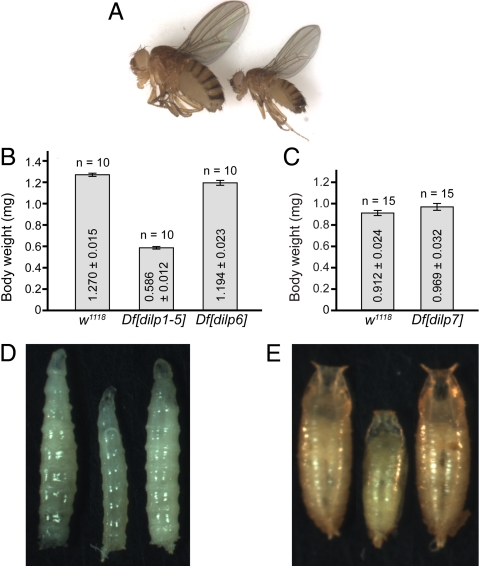Fig. 1.
Deletion of dilps1–5 impairs organismal growth. (A) Df[dilp1–5] adult homozygotes are viable but small. Photos of adults 1 day after eclosion: (left) w1118; (right) Df[dilp1–5]/Df[dilp1–5]. (B and C) Body weight of virgin females (B) or unmated males (C) of control and dilp deficiencies, as indicated. Data represents mean ± standard error. The body size and weight of Df[dilp1–5] was reduced. (D and E) Df[dilp1–5] larvae and pupae are small. Photos of third-instar larvae (D) or pupae (E) are shown; (left), parental control line d02657; (middle), Df[dilp1–5] homozygotes; (right), ‘rescued’ Df[dilp1–5] homozygotes (hsGAL4>UASdilp2; Df[dilp1–5]/Df[dilp1–5]). Growth defects in Df[dilp1–5] homozygotes were fully rescued by low level ubiquitous expression of DILP2 at 25 °C.

